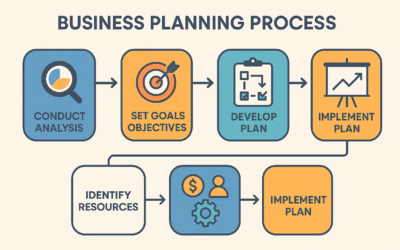The business tax landscape is in a state of constant fluctuation, and businesses large and small are always trying to keep up with changes. Extra regulations and guidance are issued almost every month and change has become a new normal. It couldn’t be more important, then, to adopt strategic tax planning strategies to lower your business’s tax liability.
If you read our Global Resources LLC reviews, you’ll see that we can offer effective strategic tax planning advice that will greatly benefit your organization. Here are just a few of the strategies that we would recommend.
Bonus Depreciation
The rules for bonus depreciation have recently been expanded to allow taxpayers the full expensing of used and new qualifying property that is placed in service before the year 2023. This creates major incentives for investing in tangible depreciable property as well as computer software. The allowances for bonus depreciation have increased up to 100% from 50% for any qualified property that has been acquired then placed in service at any time after 27th September 2017 up to 2023. An excellent strategy is to plan any eligible property purchases to assure that this yearly bonus depreciation and asset expense election is put to maximum use.
Opportunity Zones
The new opportunity zones tax incentives enable investors to defer their tax on capital gains through investment in Qualified Opportunity Funds. The taxpayer can defer their taxes by reinvesting the capital gains derived from asset sales into qualified opportunity funds during 180 days commencing on the sale date that gave rise to the capital gain. After it has been rolled over, this capital gain will remain free of tax until either 2026 comes to an end or the fund is divested.
When an investment has been held for 5 years, the basis is stepped up by 10%. If it’s held for 7 years, the step-up is 15%. If it’s held for a minimum of 10 years, the capital gains over the rollover amount are exempt permanently from taxation. However, to get the maximum potential benefit from this strategy, the taxpayer has to have invested in the Qualified Opportunity Fund before 31st December 2019.
Corporate Alternative Minimum Tax Rescinded
Another tax planning opportunity comes in the form of AMT credits which can offset regular tax liabilities for years following 2017. Moving forward, prior AMT liabilities can offset regular tax liabilities for all taxable years after 2017.
Not only that, but AMT credit can be refunded for all taxable years starting before 2022 and after 2017 in an amount that equals 50% (or 100% for the taxable years starting in 2021) of the total excess credit for that tax year (subject to the 6.2% sequestration rate).
Getting Tax Planning Advice
Instead of looking at new tax provisions separately, it’s important to take a holistic view of changes to assess the impact they may have and to develop effective tax planning strategies. The company’s entire tax liability must be determined and the planning structured so the organization’s full picture is addressed. To achieve this, getting advice from a professional team of consultants is the best way forward.

0 Comments